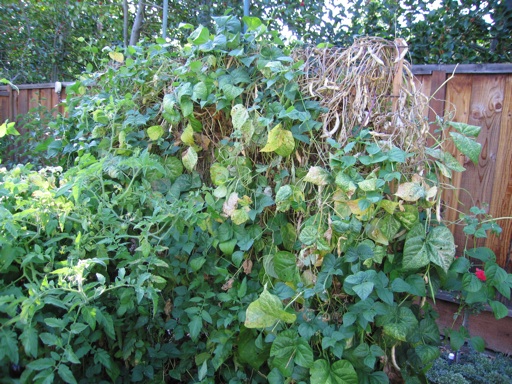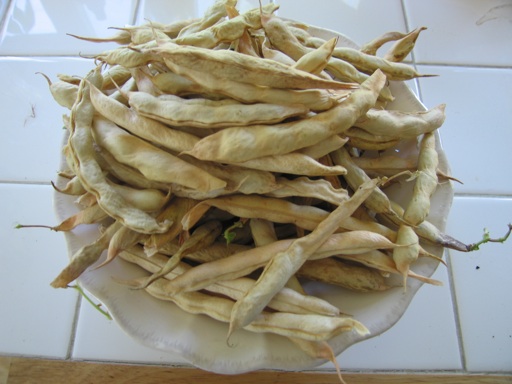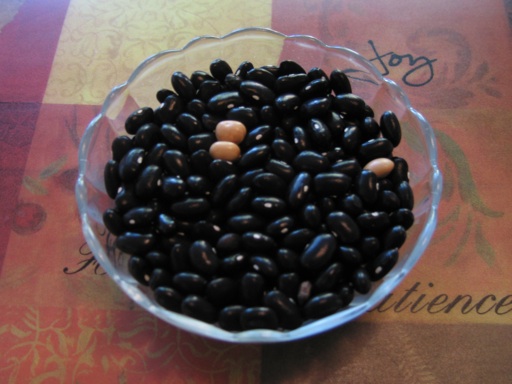Harvesting Dried Bean Seeds



We have been harvesting beans from our pole bean plants since late June. During the summer, they were producing more beans than we wanted to eat, so I didn’t harvest them all. They are starting to wind down their production of beans now, but there are many bean pods left on the vines that have dried up.
Today, I spent about an hour harvesting the dried bean pods and removing the seeds from them. Each fall, I save bean seeds from the dried up beans pods to plant as next year’s crop of pole beans. I place the bean seeds in a zip-locked bag marked with the date I harvested them. Then, I put the bag in a drawer in our kitchen for storage until next spring.
Beans are the only seeds I harvest from our vegetable garden to re-plant for next year. Bean seeds are very easy to harvest, because they are large seeds, and they dry within the pods while they are still on the vine. Other types of vegetable seeds are much smaller and are more of a challenge to pick and dry.
I always make sure to harvest the seeds from bean pods that are completely dried up. The dried up pods crumble in my hands when I break them open. I have noticed that if the bean seeds inside are not completely dry and hard, mildew may start to grow on them while they are in storage.
This year I planted mainly Romano (Italian) beans and some Blue Lake pole beans. The black beans shown in the third picture above are the Romano beans. These types of beans are usually grown for harvest as green beans. But I think the dried black bean seeds from the Romano bean plants can also be cooked and eaten. We have too many dried bean seeds to plant next year in our relatively small vegetable garden, so I am going to try cooking some of them and using them in Mexican dishes.
October 04 2009 06:02 pm | Beans